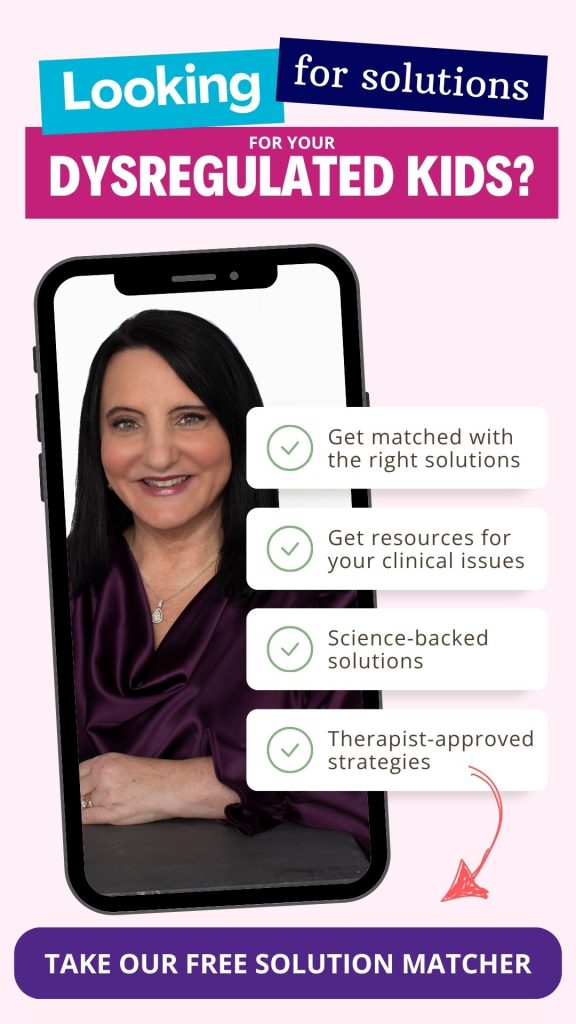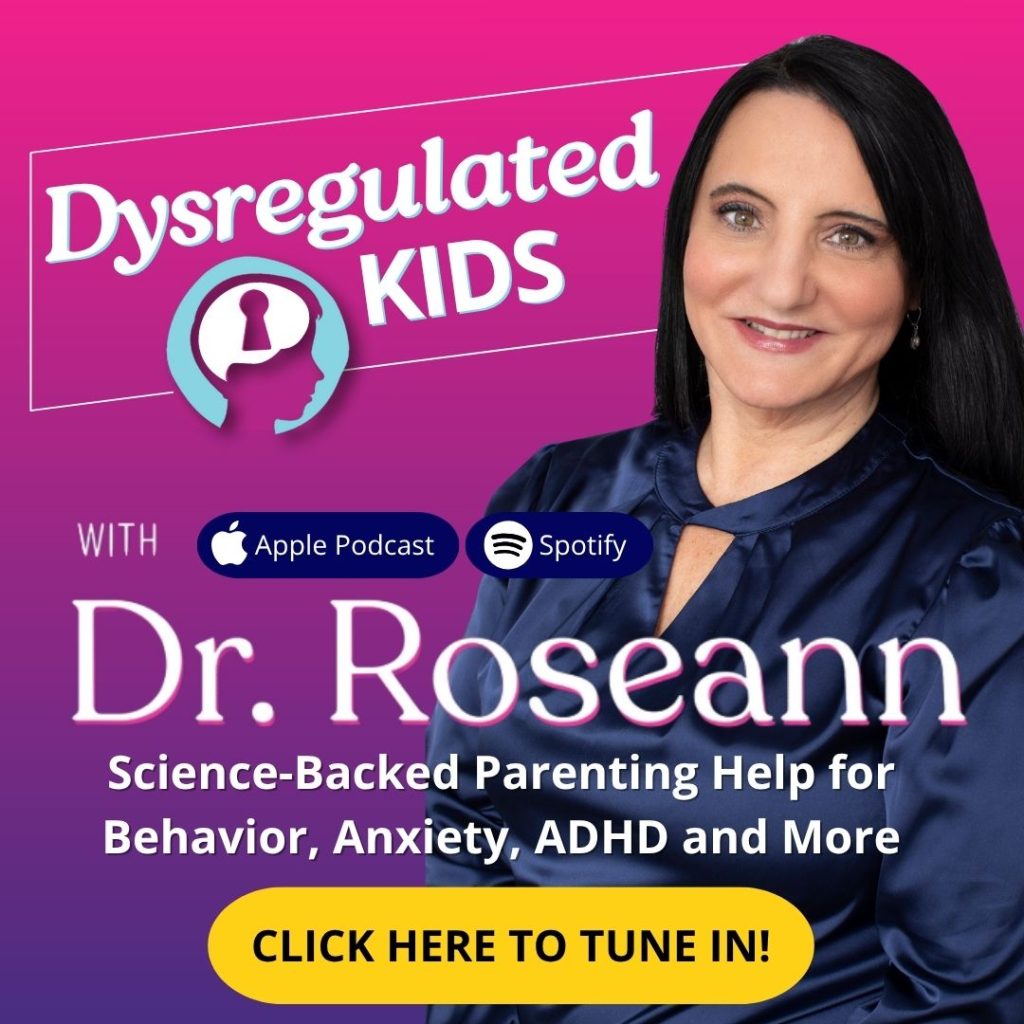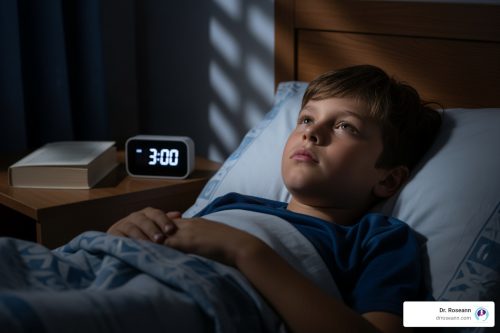Estimated reading time: 7 minutes
If your child’s emotions have been bouncing between meltdown mode and “leave me alone” in record time, take a breath—you’re not the only parent riding this rollercoaster. When OCD enters the picture, it’s not just about rituals and rules; it’s about big, hard-to-manage feelings that hijack your kid’s brain (and your household).
The good news? There are brain-based tools that actually help your child’s OCD-linked emotional dysregulation.
What Are Emotion Regulation Skills?
Emotion regulation is your child’s ability to handle big feelings without falling apart. It includes being able to:
- Recognize feelings
- Express them appropriately
- Shift out of overwhelm
- Return to calm after stress

For kids with OCD, this regulation system is often out of whack because of how the disorder affects the brain’s ability to process fear and uncertainty.
Why Do Kids With OCD Struggle to Regulate Emotions?
Children with OCD tend to feel emotions intensely—especially fear, anxiety, and shame. Their nervous system is in a chronic state of fight, flight, or freeze.
The OCD brain reacts to perceived danger—even when there is none.
Some reasons why:
- An overactive amygdala (fear center of the brain)
- Poor communication between the frontal lobe and limbic system
- Cognitive distortions like black-and-white thinking
- Repetitive, intrusive thoughts that fuel emotional dysregulation
We once had Luke, a 10-year-old who would have hour-long meltdowns when he couldn’t repeat a ritual perfectly. According to his mom, Julia, “It’s like he just flips. Nothing calms him down until it’s ‘just right.’”

How Does Emotional Dysregulation Show Up in OCD?
Dysregulation doesn’t always look like a tantrum. It can also be
- Explosive outbursts over small triggers
- Emotional shutdown or zoning out
- Irritability, defiance, or rage
- Obsessive self-blame
- Crying spells or clinginess

Emotional dysregulation is a complex construct that aggravates not just OCD, but plenty of other mental health disorders (Paulus, 2021).
Can Emotion Regulation Skills Reduce OCD Symptoms?
Yes—while they may not eliminate obsessions or compulsions entirely, they can:
- Lower anxiety levels
- Interrupt compulsive urges
- Improve frustration tolerance
- Support other therapies like ERP and CBT
Think of it this way: when the brain is calmer, it’s easier to learn new ways of thinking and behaving.
Dr. Eli Lebowitz from the Yale Child Study Center emphasizes that teaching emotional regulation is essential for kids with OCD because it builds the internal skills they need to handle distress without falling into rituals.

What Are Some Emotion Regulation Techniques for OCD?
Here are several science-backed techniques to help your child regulate emotions:
1. Name the Feeling
Labeling emotions helps the brain move out of reactivity and into thinking mode.
- Try: “Sounds like you’re feeling really overwhelmed right now.”
2. Use Grounding Techniques
Sensory and body-based tools that help kids stay present.
- 5-4-3-2-1 (name 5 things you see, 4 you can touch…)
- Cold water splash
- Deep belly breathing
3. Co-Regulation With a Calm Adult
Your calmness helps calm their brain.
- Sit quietly beside them
- Use a calm, low voice
- Offer a comforting touch or hug
How Can Parents Support Emotion Regulation at Home?
You don’t have to be a therapist to help your child regulate emotions. Consistent, loving support at home goes a long way:
- Model your own coping strategies
- Stick to a predictable routine
- Avoid shaming behaviors or meltdowns
- Offer choices when OCD shows up
- Use “coping corners” with fidgets, weighted items, or calming tools
- Practice co-regulation
When Should I Seek Professional Help?
If your child’s emotions are interfering with daily life, therapy can help. Look for:
- Licensed therapists trained in CBT, ERP, or neurofeedback
- Professionals experienced with OCD and emotional regulation
- A team-based approach that includes parent coaching
It’s not bad parenting—it’s a dysregulated brain. Therapy can calm the brain and support lasting change.
What’s the Role of the Brain in Emotional Regulation and OCD?
Emotion regulation starts in the brain. When the prefrontal cortex (the thinking brain) is underdeveloped or under stress, the emotional brain takes over.
Research, over the years, has presented evidence that cognitive strategies for emotion regulation have been found to help manage OCD symptoms (Ferrández-Mas, J, et al., 2023).
With OCD, there’s often hyperactivity in:
- Amygdala (fear)
- Anterior cingulate cortex (error detection)
- Basal ganglia (repetitive behavior)
That’s why calming the brain is key.
Want more tools to help your child regulate their emotions? Sign up to our comprehensive Dysregulation Solution where you get access to:
- Calm brain techniques
- Coaching calls with me, Dr. Roseann
- “How to” scripts and roleplays
- The Self-Regulation Mastery Blueprint
- An exclusive community of parents who are in the same situation as you are
Helping a child with OCD learn to regulate emotions takes time, patience, and the right support. But progress is possible.
Start with small tools. Celebrate tiny wins. And most of all, remember: You’re not alone.
Let’s calm the brain first—and the rest will follow.
Parent Action Steps:
What age can kids start learning emotion regulation?
Even toddlers can start learning the basics, like naming their feelings or taking a few deep breaths. The earlier you start, the more those tools become second nature as they grow. It’s all about meeting them where they are.
Can emotion regulation really help teens with OCD?
Yes. Teens benefit hugely from learning how to ride the emotional waves—especially when therapy like ERP pushes them to face fears head-on. With the right tools, even your eye-rolling, door-slamming teen can learn to self-regulate.
Is emotion regulation the same as emotional intelligence?
Not quite. Emotion regulation is part of emotional intelligence—it’s the real-time skill of managing big feelings, especially under stress. Think of it as the “in-the-moment” muscle we’re helping kids build.
What if my child wants nothing to do with these tools?
Totally normal. Some kids resist (okay, most do at first). That’s why your regulation matters. When they see you breathe, pause, or take a break—they’re learning. Keep modeling calm, keep offering, and keep it low-pressure.
How do I know if it’s OCD or just regular anxiety?
That’s a big one. OCD usually involves specific intrusive thoughts followed by rituals or behaviors meant to relieve the distress. Anxiety is more generalized. If you’re unsure, trust your gut and get a professional evaluation—it’s not overreacting, it’s being proactive.
Citations:
Ferrández-Mas, J., Moreno-Amador, B., Marzo, J. C., Falcó, R., Molina-Torres, J., Cervin, M., & Piqueras, J. A. (2023). Relationship between Cognitive Strategies of Emotion Regulation and Dimensions of Obsessive-Compulsive Symptomatology in Adolescents. Children (Basel, Switzerland), 10(5), 803. https://doi.org/10.3390/children10050803
Paulus, F. W., Ohmann, S., Möhler, E., Plener, P., & Popow, C. (2021). Emotional Dysregulation in Children and Adolescents With Psychiatric Disorders. A Narrative Review. Frontiers in psychiatry, 12, 628252. https://doi.org/10.3389/fpsyt.2021.628252
Dr. Roseann is a mental health expert in Self-Regulation who frequently is in the media:
- Healthline Understanding Self-Regulation Skills
- Scary Mommy What Is Self-Regulation In Children, And How Can You Help Improve It?
- The Warrior Parent Podcast It’s Gonna Be OK! Changing Behaviors and Responses (And The Magic of Magnesium)In Your Family with Dr. Roseann Capanna-Hodge
Always remember… “Calm Brain, Happy Family™”
Disclaimer: This article is not intended to give health advice and it is recommended to consult with a physician before beginning any new wellness regime. *The effectiveness of diagnosis and treatment vary by patient and condition. Dr. Roseann Capanna-Hodge, LLC does not guarantee certain results.
Are you looking for SOLUTIONS for your struggling child or teen?
Dr. Roseann and her team are all about science-backed solutions, so you are in the right place!











